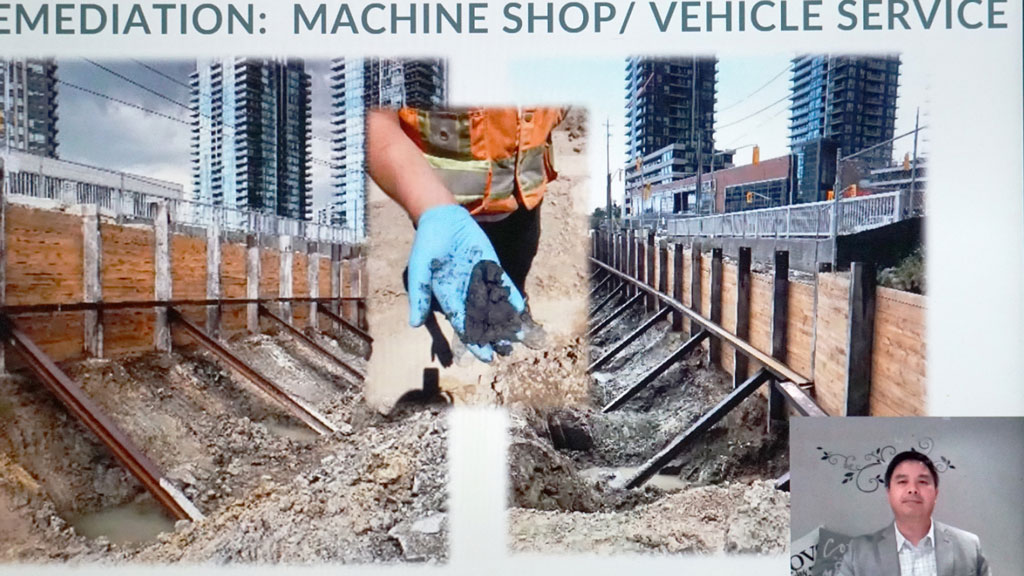On the 28-acre former Christie Cookie factory in east Toronto, developer First Capital REIT is working on a mixed-use redevelopment plan that will see 6.5 million square feet built out in 30 buildings, including a signature 71-storey residential tower.
To achieve a Record of Site Condition (RSC) approval from the province, which is required for a land use change from industrial to residential zoning, the developer first needed to obtain risk assessment approvals and it had two options to meeting that objective.
Albert Ho, senior director, environment for First Capital, said his company chose to remediate select areas of the site upfront, rather than implement a risk management program aimed at addressing contamination on the entire site later.
Ho, a panellist at a webinar on overcoming brownfield technical challenges, told the audience while most developers view an RSC as a costly and time-consuming process, at the former cookie factory the RSC eliminated onerous risk management measures that could encumber the property during construction, operation or maintenance of the buildings later.
“If you are an (environmental) consultant, you can best help your client achieve the desired development outcome by understanding what risk management measures they can accept at the beginning of the RSC process,” Ho said at the webinar at the Canadian Brownfields Network conference recently.
Panellist Bruce Tunnicliffe, president of Vertex Environmental Inc., told the webinar many brownfields today are being “unlocked” largely because more financial institutions are willing to lend money on land with risk assessments (RAs) in place. Those RAs also instil confidence in the buyer market.
“It has helped to define the remediation methods used on brownfields,” he said.
At the webinar, Tunnicliffe spoke about the long-term, maintenance-free risk measures of vapour barriers and permeable reactive barriers (PRB) as risk management measures for indoor air and offsite situations.
Approved by the Ministry of Environment, PRBs typically are installed at a property boundary. They allow water flow but react to or trap and treat contaminants, he said.
Laura Kinsman, a professional scientist at Savron, said the company employs in-situ and ex-situ smouldering combustion (SC) through STAR technology to destroy soil contaminants. SC converts carbon compounds primarily to carbon dioxide in water.
The company, which has worked in Canada, the U.S. and overseas, destroys underground contaminants such as petroleum hydrocarbons though the insertion of oxygen and heat applied by an electric element to the source. Once combustion starts, it is self-sustaining, meaning it will continue to heat adjacent soil, Kinsman told the webinar audience.
She said the remediation tool offers rapid onsite treatment for contaminant removal and can be applied above or below the water table under fully saturated conditions.
The “highly energy efficient” technology is currently suitable for contaminants such as coal tar, creosote and hydrocarbons, but Kinsman said Savron is researching new applications for other contaminants.
The cost of SC technology depends on the soil type and site conditions, but typically the price for contaminant destruction is $100 to $150 per cubic metre.
Stephanie Clarke, an environmental consultant with WSP, said the company has developed odour control management strategies after working on several large-scale sites with odour problems on and off-site.
A common source of odour is from soil or water contaminated with volatile organic compounds, she said, noting odour misters and foam suppressions and sprays are effective on large-scale sites or land with significant contaminants.
Clarke said the cost of an odour control and management plan should form part of the construction tender package.



Recent Comments
comments for this post are closed